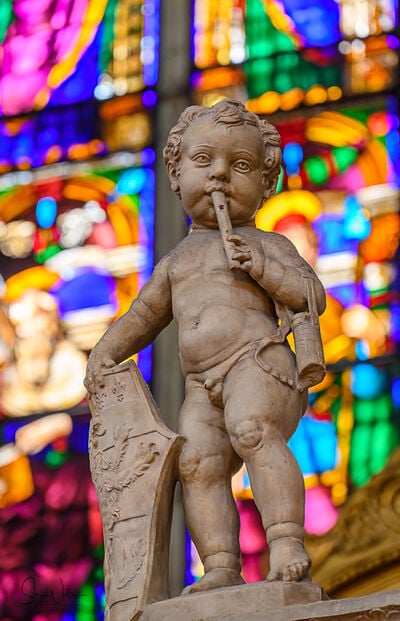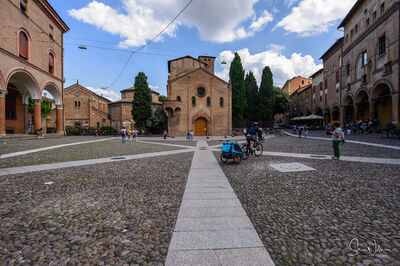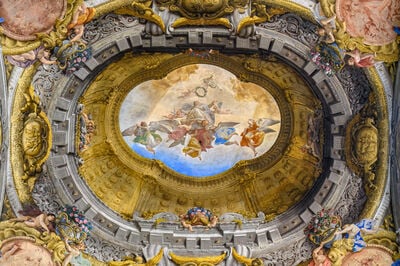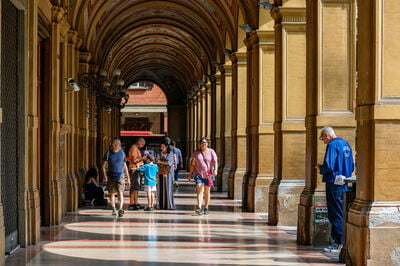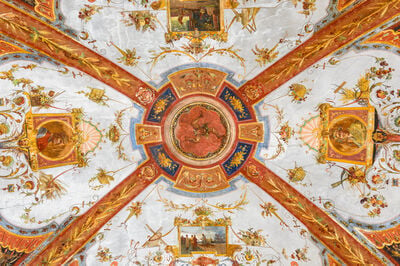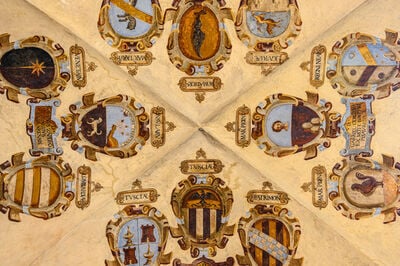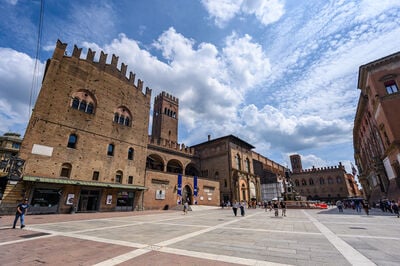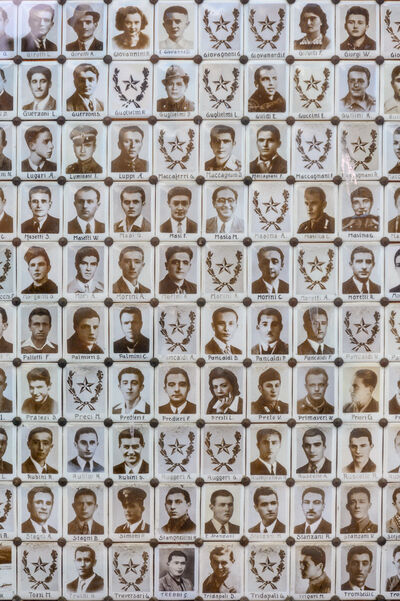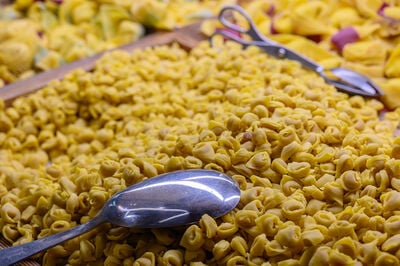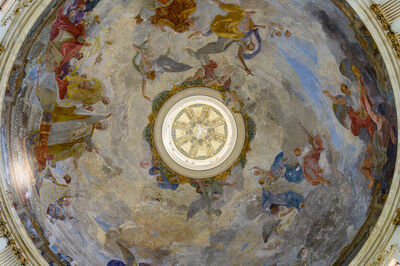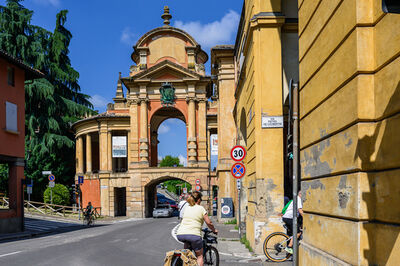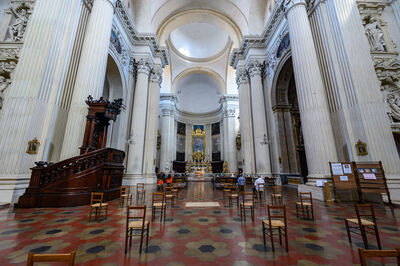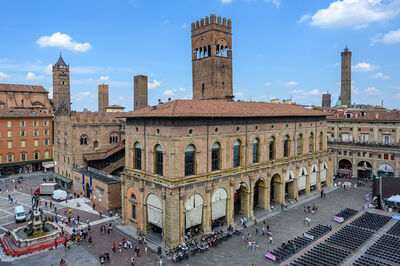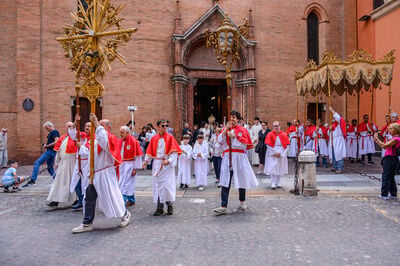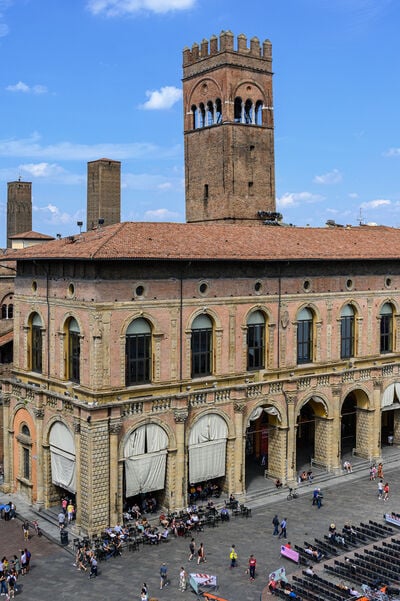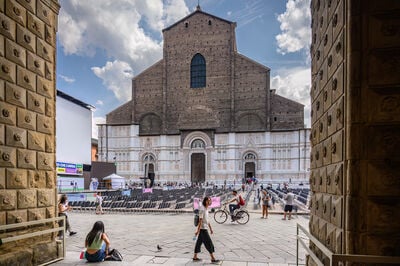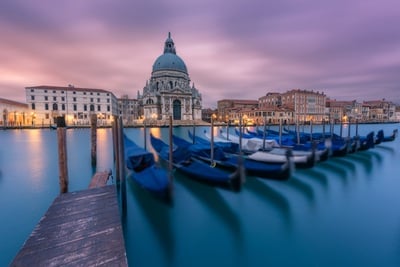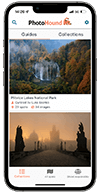The photography guide to
 Bologna
Bologna
Bologna photography guide
Our contributors have added 41 photo spots to this Bologna photo guide. Have you discovered an amazing new location in Bologna?
Introduction
The ancient city of Bologna was built on the Via Emilia, the Roman road from Rimini to Piacenza. Located in the fertile plains, the city flourished. The prosperous Bolognese nobles spent their money on luxurious palaces and Gothic churches filled with Renaissance art making Bologna one of Italy’s most beautiful cities.
Bologna is the capital of the northern region of Emilia-Romagna and is often referred to by one of its three nicknames—La Dotta, La Grassa, and La Rossa.
La Dotta “the learned” is home to the University of Bologna—the oldest university in Europe (1088). The University has 85,000+ students from around the world, multiple campuses, and hundreds of degree programs.
La Grassa “the fat” is situated in the breadbasket of Italy and is widely accepted as the food capital of Italy. The city is known for Parma ham, parmesan cheese, balsamic vinegar, mortadella, ragù and tortellini. The Quadrilatero District is full of gourmet delis and market stalls overflowing with fresh produce and culinary delights.
La Rossa “the red” refers to the architecture of the city with its red roof tiles and brick, and perhaps the left-leaning political views.
Most popular Bologna photo spots
Events
Spring: As the days warm, the food and wine festivals begin to gear up. Di Verde celebrates the local gardens and is held in May. Festivals are held throughout the region so if you have time you may want to take a day trip outside the city.
Summer: The Piazza Maggiore holds an outdoor film festival each summer with a huge screen set up in the middle of the square.
Fall: September through November is all about food and wine festivals. The Festival for Prosciutto di Parma is held in September. October 4 is Saint’s Day in Bologna with a religious procession between the Cattedrale San Pietro and the Basilica di San Petronio. Weekends in October and November are full of activities including the TartuFesta (truffle festival) and a large wine exhibit.
Winter: This is off-peak season due to the chilly temperatures. However, the city is decorated for the holidays and there is a large New Year’s Eve celebration in the Piazza Maggiore.
Travel
While Bologna has the same experiences the major cities of Rome, Florence, Venice, and Naples offer, it seems to fly under the tourist radar. The best time to visit is late Spring and early Fall when the weather is cooler, and the summer crowds have yet to arrive en masse.
Dress is casual but when visiting churches, you will need to have arms and knees covered. FYI, shorts are not common in Italy except at beach resorts.
Bologna Airport is 6km north of the city. Taxis are available 24/7 to the old city center. The Marconi Express monorail connects the airport to Bologna’s central station. The best way to travel around Italy is by train. You can reach Florence in 35 minutes and Rome in 2 hours.
Italy uses the Euro and accepts all major credit cards. The most common wall socket in Bologna takes an EU standard plug type C and F (two-pin) at 220V. I recommend purchasing a 220V power strip as many hotels have limited wall outlets for charging camera gear.
Most Bolognese speak at least some English. On a rare occasion, I had to pull out my iPhone and use a translation app when asking a very specific question. Public restrooms in Bologna are not common. The Biblioteca Salaborsa, located off the Piazza del Nettuno, has a public restroom on the lower floor. You will need 0,50 cents for the turnstile. If you do not have coin, there is a change machine on the main floor. Your best bet is to use the water closet at a bar, café, or restaurant.
Photography
Bologna has a lot to offer photographers. Due to its compact size and flat terrain, I found it an easy city to walk—be sure to pack comfortable shoes. Kudos to the Tourism Bureau for installing plaques throughout the city identifying the major buildings. If you get lost wandering the side streets all the main spokes of the “wheel” lead back to the center of Piazza Maggiore.
While architecture is the main photo subject in Bologna, you will have opportunity for street and food photography.
You can photograph the interior of most churches, but flash photography may not be permitted. Churches are free to the public, but some may request a donation to shoot in certain areas. Be sensitive to people worshipping. Tourists and photographers are part of the routine in many of the most visited churches. Yet those congregations off the beaten path have not adjusted to the distraction—so pay particular attention to your surroundings and respect those praying. Switch your camera to silent mode if you have that capability.
Take advantage of places like the Torre dell’Orologio and Torre degli Asinelli to get a bird’s eye view of the city’s red tile roofs. The elevated perspective will be worth the effort.
Links
Bologna Tourist Bureau
Bologna Airport
Bologna Welcome Card
Marconi Express
Train Schedule
Explore more photo spots in Italy
If you want to explore beyond Bologna, we have 595 photo spots and 3 events that you can visit in Italy.
Curated By
Sue Wolfe Curator
We hope you enjoy this guide to photographing Bologna - don't forget to share your images on PhotoHound and tag us on social media using hashtag #photohound
